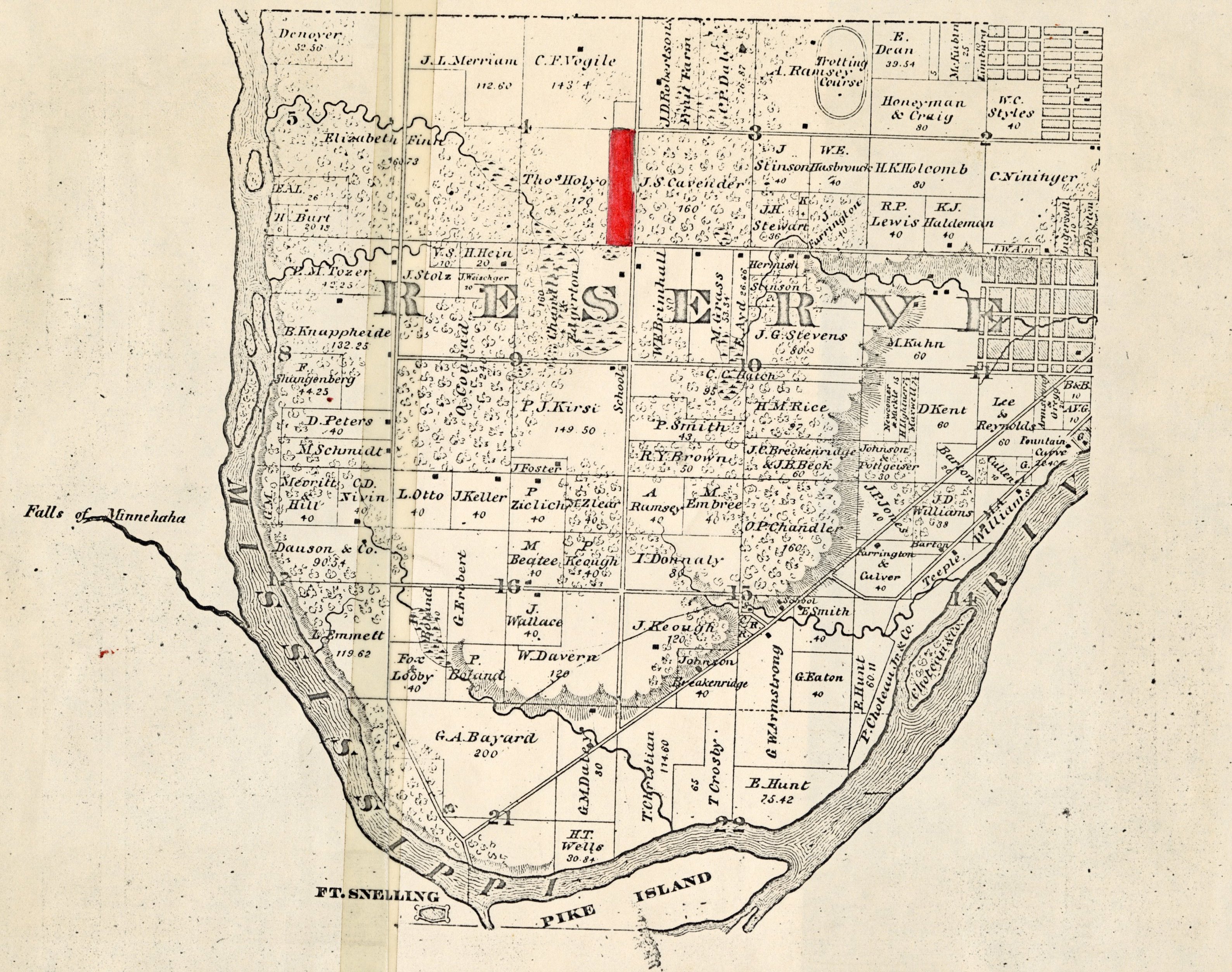Choosing a Location
The decision of where to build a new college was a difficult one in the early days of Macalester, and the outcome would shape the character of the school for the rest of its history. The trustees of the college chose to sell the dilapidated Winslow House after Charles Macalester’s death and use the funds to purchase a new plot of land.1 Many potential places were considered, including plots of land north of University Avenue, in St. Anthony Park and in Minneapolis, somewhere between Fort Snelling and Bde Maka Ska.2 However, after much back and forth, the trustees came to a decision in in late January 1882 and chose to purchase 160 acres of land from the estate of Thomas Holyoke.3 The land was located on the southwest corner of Snelling and Summit Avenues, right in between the urban centers of Minneapolis and St. Paul.

The Holyoke estate, like all of the land that now houses the Twin Cities, came under United States control after Zebulon Pike arrived to the area in 1805 as part of an expedition of the Louisisana Territory.4 Pike gifted money and alcohol to a group of Dakota people in exchange for 100,000 acres of land in order to build a fort— however, the agreement wasn’t officially recognized by the US government until 1808.5 That land would eventually contain the Twin Cities. Throughout the 19th century, the land became territory of the US military before being divided up and passing through the hands of white settlers, who used intimidation tactics to keep the land prices low and under their control.6 The plot that was transferred to the trustees of Macalester College was eventually sold to Thomas Holyoke, who kept it until his death in 1880.7
Although Macalester’s location would eventually become one of its strongest selling points, initial impressions of the spot were less than ideal. Thomas McCurdy, who would later become the college’s president, had a distinctly negative impression of the location when he first visited in 1883, calling it “beggarly” and noting its lack of funding and amenities.8 The site was two miles away from the nearest streetcar stop, and it would be several years before the electric trolley would reach campus, thanks in part to an investment of $6500 from the college and the donation of a chunk of its campus to form what would one day become Grand Avenue.9
Despite the initial uncertainty around the college’s location, the first college catalog, released in 1885, does not hesitate to claim that presidents of colleges on the East Coast “pronounce it the best they have any knowledge of in this country.” The college administration was clearly eager to establish Macalester as a peer institution to older, more established colleges on the East Coast, like Neill’s idealized alma mater, Amherst. In addition to the campus’s natural beauty, the catalog somewhat paradoxically praises both its isolation from the sinful temptations of city life and its proximity to the urban centers of both Minneapolis and St. Paul: “The location is beautiful and commanding [. . .] Trains pass every hour to one or other of the cities. There are no saloons or other temptations to immoral habits present. All of the advantages of the city are had, without any of the disadvantages.”10 Despite the urbanization and development that has taken place since 1885, Macalester’s current website and marketing materials continue to highlight the college’s location between the Twin Cities (although without mention of saloons).
-
Kilde, Nature and Revelation, 40. ↩
-
Ibid., 58. ↩
-
Edward Duffield Neill Records Box 1. ↩
-
Chamness, “Macalester Land Plot History.” ↩
-
Ibid. ↩
-
Ibid. ↩
-
Ibid. ↩
-
Quoted in Kilde, Nature and Revelation, 63. ↩
-
Ibid., 62. ↩
-
Macalester College, “First Annual Catalogue,” College Catalogs, Macalester College Archives, 1886, https://digitalcommons.macalester.edu/catalogs/19/, 24. ↩